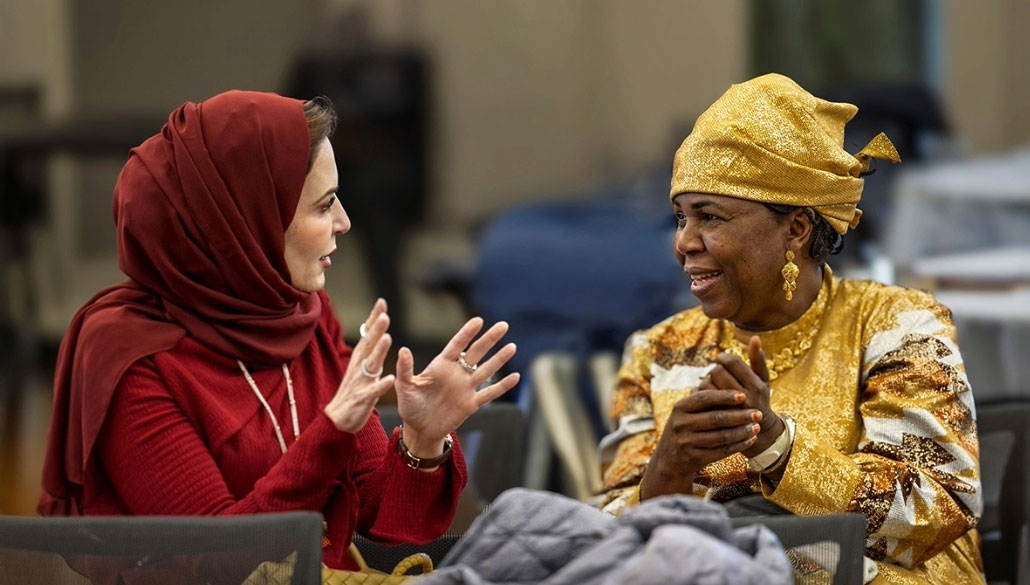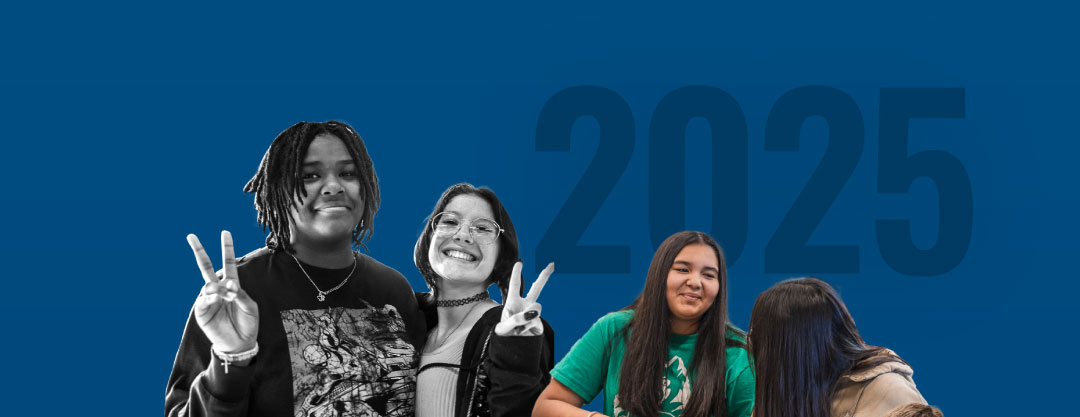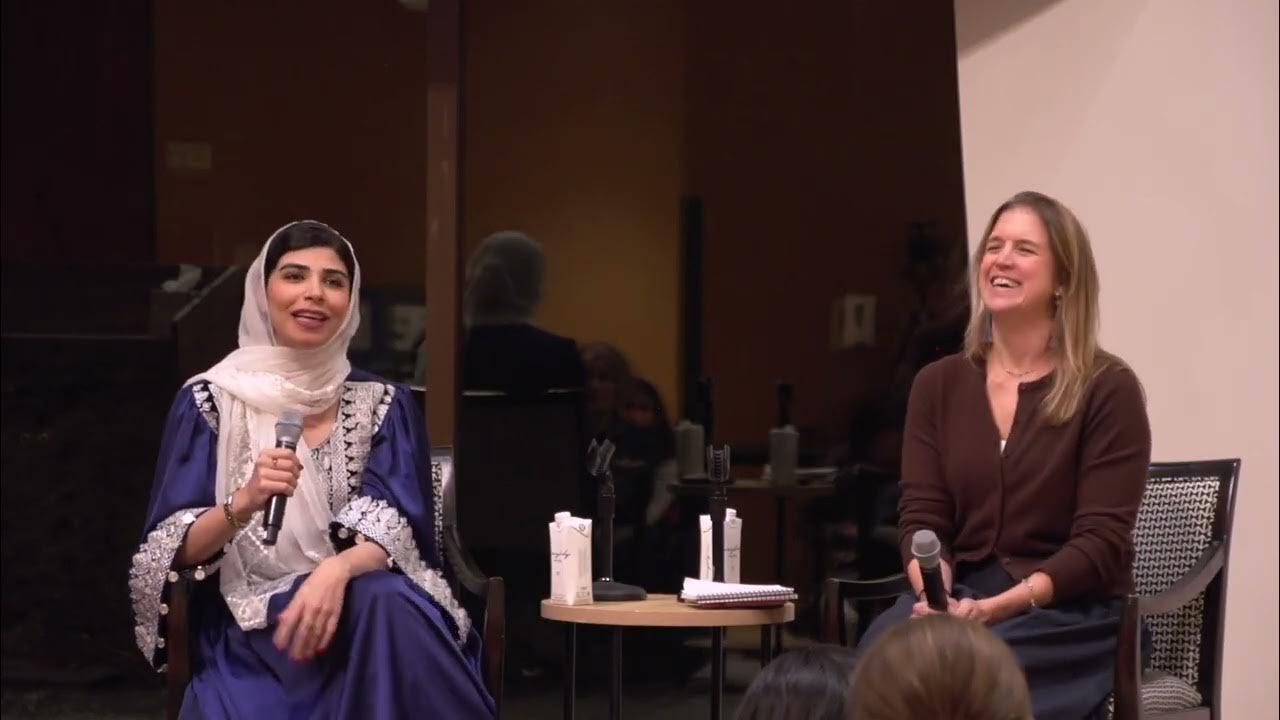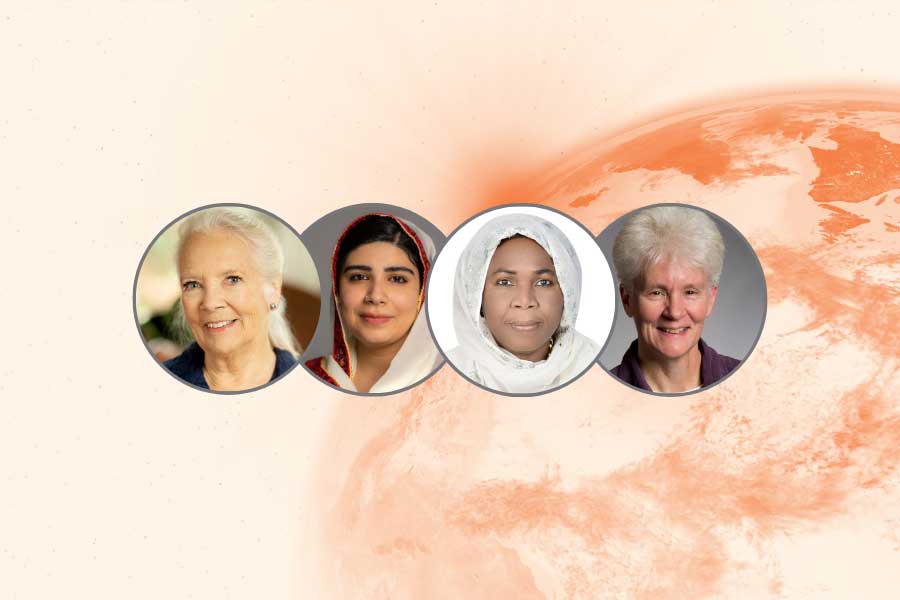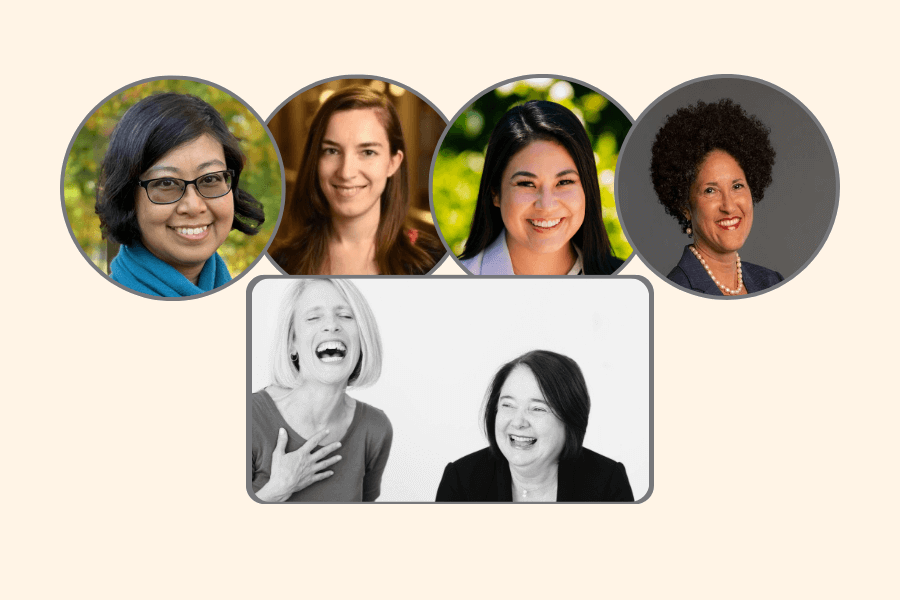The National Seeking Educational Equity and Diversity (SEED) Project on Inclusive Curriculum is now in its 18th year. The SEED Project prepares teachers to lead year-long, school-based seminars on making school climates, curricula, and teaching methods more gender fair and multiculturally equitable.
Research & Action Report Spring/Summer 2004
The National Seeking Educational Equity and Diversity (SEED) Project on Inclusive Curriculum is now in its 18th year. The SEED Project prepares teachers to lead year-long, school-based seminars on making school climates, curricula, and teaching methods more gender fair and multiculturally equitable.
Peggy McIntosh, Ph.D., who founded the project, co-directs it with Emily Style, who teaches at Westfield High School in New Jersey, and Brenda Flyswithhawks, who teaches at Santa Rosa Junior College in California. McIntosh is also an associate director of the Center for Research on Women at Wellesley Centers for Women and directs the Gender, Race, and Inclusive Education Project, which provides workshops on privilege systems; feelings of fraudulence; and diversifying workplaces, curricula, and teaching methods. In addition, she directs the Gender Equity in Model Sites (GEMS) Project in two Boston-area urban schools.

Brenda Flyswithhawks, Peggy McIntosh and Emily Style, Co-directors of the National SEED Project on Inclusive Curriculum
Over the course of 18 years, the number of teacher enrollments in year-long SEED seminars has topped 30,000. What’s the inducement for busy teachers to enroll in a voluntary, unpaid, monthly seminar?
The 14 senior staff members of SEED would probably give you 14 different answers to that question. That’s one characteristic of the project’s richness—in fact, I should say diversity! But I think all of us would agree that SEED deepens awareness of both our own stories and the larger worlds we are in.
Can you say more about what you mean by stories?
In the SEED Project we use a lot of interactive exercises that draw on people’s experiences—and I don’t mean opinions—and do so in a group setting. This process is designed to be supportive, respectful, challenging, interesting, and growth inducing. It is also potentially transformative. I feel this is why busy teachers show up. I remember that twice, when schools were closed because of a strike and a race crisis, teachers continued their SEED seminars. Members said SEED was for them; it was not something they had to do.
It sounds as though SEED participants have become very committed to the program.
Yes, and because SEED promotes the growth and development of teachers, it benefits the entire educational system, including all of the students. I would say it recalls members to some of their purposes in going into education and gives them expanded reasons for staying in education, which they certainly need in this day and age of education in the U.S. When the teachers insisted on continuing their SEED seminars they were saying, “This work is for us. We need and want it.”
Is SEED radical?
Yes, in the Latin sense of going to the roots (radix; radices) of some of the problems in ourselves, in education, and in the larger society.
What are the roots of the problem as you see them?
If education really were about the growth and development of everyone in a school system, then we would not have so much energy spent by teachers keeping themselves and students (unsuccessfully) disciplined into narrow ways of thinking and feeling. I feel that most teachers experience many of the same confinements that students do. SEED work helps them to repair the damage done to them by the requirement that they leave so much of their actual experience and passion behind and teach from a small segment of their perceptions, knowledge, and capacities.
Are you referring to teachers having to teach to a test?
That is only part of the problem. It is true that preparing students for standardized tests and unspeculative, normative ways of thinking can be exhausting for teachers partly because it is usually deadening for teachers and students alike.
But in SEED work we also quote co-director Emily Style, who coined the phrase, “making textbooks of our lives,” by which she means bringing students’ and teachers’ own experiences into classroom discussions and course content. I feel that the omission of student knowledge from curricula is a major source of alienation for them and contributes to the fact that so many do not learn to read, write, or think with intellectual curiosity and respect for evidence.
In addition, the omission of the subject of power of all kinds is another deadening aspect of the curriculum. I have found that in SEED seminars, teachers who engage with hard questions of equity, diversity, and social justice by bringing their own perceptions in and listening to the experience of others feel they are recovering something they lost in schooling. Their human breadth comes back, along with their longing to help shape a world that is not torn apart by conflicts, denials, suffering, and isolation.
What do you mean by “hard questions” of equity and diversity?
Well, one hard question is “What messages does our curriculum, or my own teaching, deliver with regard to gender, race, class, culture, sexuality, religion, nation, and the world?” It is hard to face the answers. But to do so in company with others and to develop the ability to see the curriculum in terms of its assumptions and values is a step forward. It is also a relief, for many of us as teachers didn’t feel that we were teaching in a very coherent frame of reference, but we had no one to talk to about that. Many of us didn’t know, at a deep level, what we were doing in the classroom, but this was not something we were supported to discuss.
How do teachers come to see their frames of knowledge?
Well, the first thing is to speak just as an individual about one’s actual experience of teaching—to speak, for example, with reference to the last assignment one gave, or the most recent test one gave, or the first three writers on a reading list and why they were chosen. And in SEED we use a process called Serial Testimony in which members of a seminar sit in a circle or around tables facing each other and speak briefly, timed, for a minute or perhaps two minutes, on a given question. When you speak for just a fragment of time and listen to others the rest of the time, a kind of database begins to form within the room and teachers literally see what they have been doing more clearly than before. Many end up asking what made them settle for a version of a curriculum that leaves out their daily knowledge base and leaves out their students.
How can teachers change anything within today’s climate when they are being watched and blamed all the time?
It is possible to teach within a given curriculum and booklist and at the same time call attention to its assumptions and the framing of its versions of reality. It’s wonderful when teachers have the latitude to teach comparatively, comparing version X with version Y, and help students to ask questions about who wrote the versions and who is best served by the versions. This is the teaching of critical thinking, which schools purport to want but which is rarely fostered in the schools at this point in U.S. educational history. It is also possible to leaven the class work with poems, cartoons, art work, and videos that are not in the formal curriculum. It takes imagination.

SEED staff members Hugo Mahabir, Lori Kuwabara, Odie Douglas and Manuel Penaloza
What actually happens in a SEED seminar?
First I should tell you that a teacher decides he or she would like to lead a SEED seminar, so it is grass roots in that sense. The person who wants to lead a group—and now we accept parent, community, and college and university SEED leaders—gets financial support, usually from a school principal. We have also depended on the wonderful financial support of individuals and foundations over the last 18 years.
The leader-to-be goes to a week-long summer training in Northern California to prepare to facilitate a SEED seminar in a site at home. Then that person returns to the school or community and invites interested colleagues to join a group that will meet for three hours a month after school during the school year to discuss key questions about educational equity and diversity. Key questions for classroom teachers are “What are we teaching?” “Why?” “How can we make the school’s climate, teaching methods, and curricula more gender-fair and multicultural?” And in the last several years we have added “. . . and globally attuned.”
What are the books for a SEED seminar?
There are no set texts, though we give facilitators 20 to 30 books each year—many of which are donated by publishers and there are piles of resources of many kinds that we give to facilitators, together with use of the two SEED video libraries located in Wisconsin and at the office of the New England SEED Network. But in the same way that there is no leading authority in Serial Testimony, there are no required texts. Facilitators pick and choose from among the SEED materials that they deem useful for their colleagues in their own seminar sites.
If there are no set books, where does the authority in a SEED seminar reside?
Teachers bring the authority of their own experience. They bring their life stories. Trained SEED leaders ideally develop what we call a “balance of authority and humility,” which we hope the very multicultural training week models for them. The National SEED staff is comprised of 10 people of color and four white people. This alone is huge. And all three co-directors are women. The experience during the week is humbling and empowering at the same time. New facilitators come to trust the process of eliciting everybody’s brief personal responses and going around and around a circle of participants. The authority is really in the whole and in the process. As I told you, the 14 senior staff members, including the other two co-directors Emily Style and Brenda Flyswithhawks, would all describe the process in different terms. But from where I sit the process is nourishing, illuminating, challenging, and inspiring to new leaders, much more than most professional development I have seen. It italicizes people to themselves and elicits deep leadership resting on knowledge of self and others, in relation.
You talk as though you feel teachers are starving.
Yes, in some respects I do. They often get treated like instruments
within a larger system, used functionally (or dysfunctionally) to transmit authority but not to engage students in learning. It is very desiccated, as well as extremely taxing when the authorities are asking you to feed to students a curriculum that is starving you and also them and is located in what I see as the large and depressing gray area of education, neither deeply personal nor about overarching systems of power in us and around us. It is an evasive, disconnected curriculum, and results in dreary, alienating classes. How many students do you know who really want to get to school in the morning for the curriculum?
So how do you intervene in this cycle of starving and being starved?
SEED seminars put teachers in lateral spaces psychologically, to hold their own conversations about what they know, without outside people pressuring them to do this or that kind of education reform. Ideally, a SEED seminar answers the deep hungers to be known, to be respected, to be included in groups both as a unique contributor and as a person who belongs to the whole. The relationality which Jean Baker Miller and her colleagues identified is at the forefront of SEED processes, and one aim is to make schools places of that relationality. But it is sentimental to work for relationality without facing the power structures that work against it. Deep within us and all around us there is resistance to equity and diversity, and we keep challenging that resistance in our SEED conversations.
Is SEED work individualistic or community oriented?
The picture seems to change as you talk about it. You have hit on one of the paradoxes of the SEED process. I call this “deeply personal group work.” It is an unusual combination. When we do some of SEED’s dozens of interactive exercises, or go around a circle in Serial Testimony, people speak just for themselves. We encourage people to use the pronoun “I” and not to piggyback on others’ statements or take sides. The combination of highly personal testimonies, the group setting, and the strictly democratic distribution of time produces a feeling in the room that is both very personal and potentially connective. Many people say of a SEED seminar in their school that it brought them in touch for the first time with people they had worked beside or known for years. Somehow speaking from the heart creates a fabric, even if the fabric has stress and strains in it. The fabric is the matrix of our lives, full of complexities, but full of connections, too.
How have you brought in the global dimensions of equity and diversity? You say this happened in the last several years.
SEED seminars from the beginning countered the U.S. ideology that the only unit of society is the individual, and that whatever one ends up with is what one wanted, worked for, earned, and deserved. From the beginning SEED seminars acknowledged the existence of systems of power working both within our psyches and in the U.S. society outside of us. But at the beginning, 18 years ago, we were not thinking in terms of helping students or teachers to be global citizens. As we now enlarge the picture to include all the peoples of the world, SEED does its work on hard questions of equity, diversity, and social justice on a wider base. And I would say also that as the years go on we in SEED are also likely to become more attuned to the biological worlds and better able to reflect systemically on the interactions between human beings and the rest of the living world.
When you describe Serial Testimony it sounds like a mini-United Nations.
Well, I think if implemented it would even improve on the predictable debates and decision-making processes of the United Nations. Though we do many interactive exercises in a SEED seminar, and always have a meal together, at some point there is usually Serial Testimony. As I said, each member of a SEED group speaks in turn, within a set amount of time, such as one minute or two. There is no interruption, no “cross-talk,” and no debate. The aim is to speak from experience and to listen to the experience of others; to hear and be heard; to compare, contrast, and deepen one’s understanding of one’s self and others. The modes of Serial Testimony undercut politics as usual. The questions asked for each go-round are illuminating and growth inducing.
It sounds as though SEED is all about hard questions. How is this nourishing and supportive for teachers?
Ideally, in this and other effective diversity work, the atmosphere is not one of shame, blame, or guilt. One aim is to see systems and circumstances that we were born into, that we did not invent. These systems got lodged in us and in education. SEED facilitators are trained to see circumstances and to create a procedural and emotional “holding container” that can hold all participants as they come to new understandings. A Serial Testimony process is not about fixing each other or trying to get everybody to be at the same place, but about hearing each other and raising the capacity of the whole group to know themselves and each other around very difficult and, in some cases, taboo subjects such as privilege, or school climate, curriculum, content, and teaching methods. It is about knowing and being known and realizing that all students deserve this kind of respect, deserve to feel that they belong and will not be bullied, teased, hounded, or harassed. Educators usually feel that SEED seminars are about very real and urgent improvement in the quality of thinking and behavior in schools. Because of their structure and content, they also provide rare and welcome relief from most faculty meetings and other forums in which the talkers talk, the listeners listen, and a general feeling of malaise prevails.
Where have SEED seminars been held? Are they in public or private schools? At what grade levels?
More seminars have been held in public than in private schools, which makes sense considering that over 90 percent of the nation’s children are educated in public schools. There have been SEED seminars in 33 different states in the U.S. and in 12 other countries. A seminar may be led in any language. After a SEED seminar, many international schools that had an entirely U.S.- and European-based curriculum have widened their curricula, including language study, to be more respectful of their host countries. As I said, SEED seminars may be led by K-12 educators, parents, college teachers, community members, and members of organizations that are willing to sponsor a seminar. Since each seminar leader, or pair of co-leaders, designs their own monthly seminar agendas, the format can be adapted to many different sites and interested groups.
What has been SEED’s greatest accomplishment?
I can’t answer that, but one thing that I am pleased, and in fact awed, about is that we as staff members, working together to create a “holding container” for the bodies, souls, intellects, and emotions of teachers, have heard from so many thousands of them that this work has changed their lives. The transformative process is alive in all of the very diverse staff members as well. There are 14 leading and very diverse voices guiding SEED in any given year, and I can honestly say that I’m honored and moved to be part of that powerful SEED staff circle. SEED has turned into a force for change of a magnitude and depth I never would have imagined and could never have created alone.


